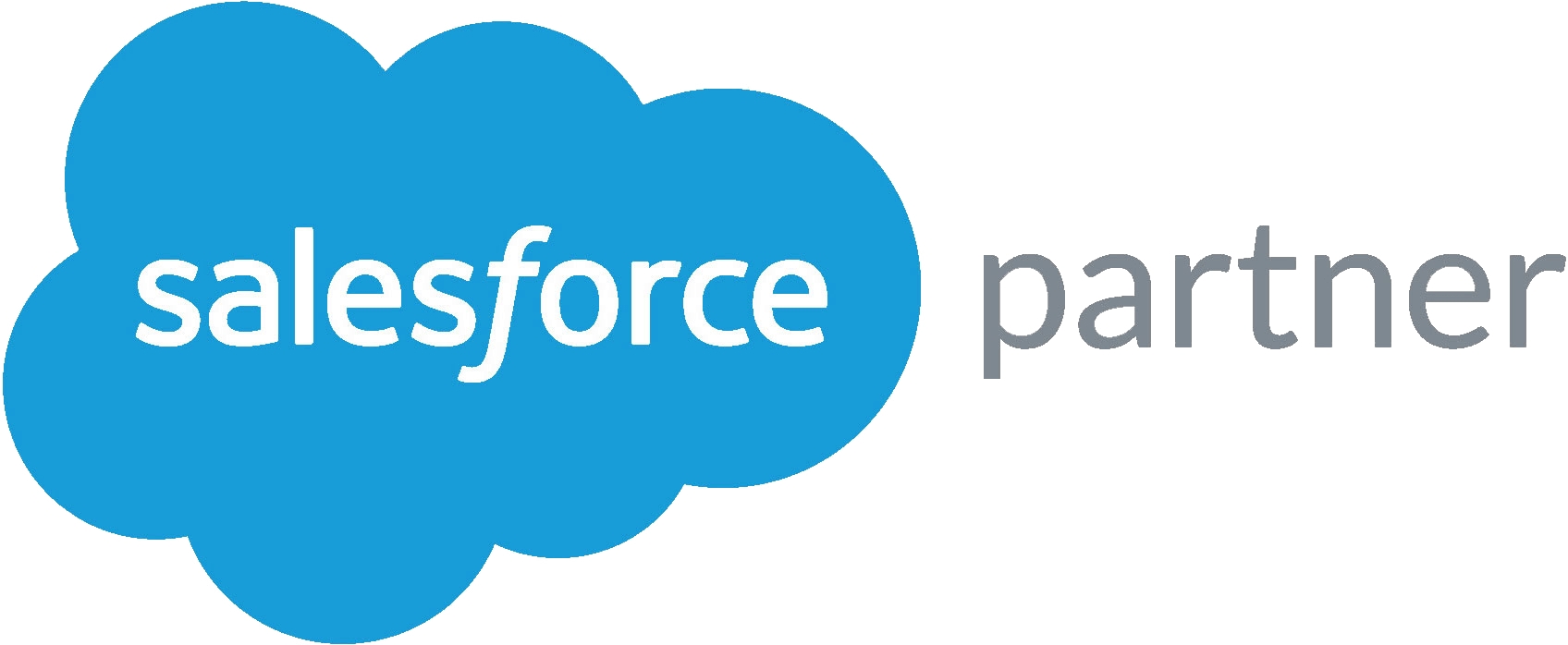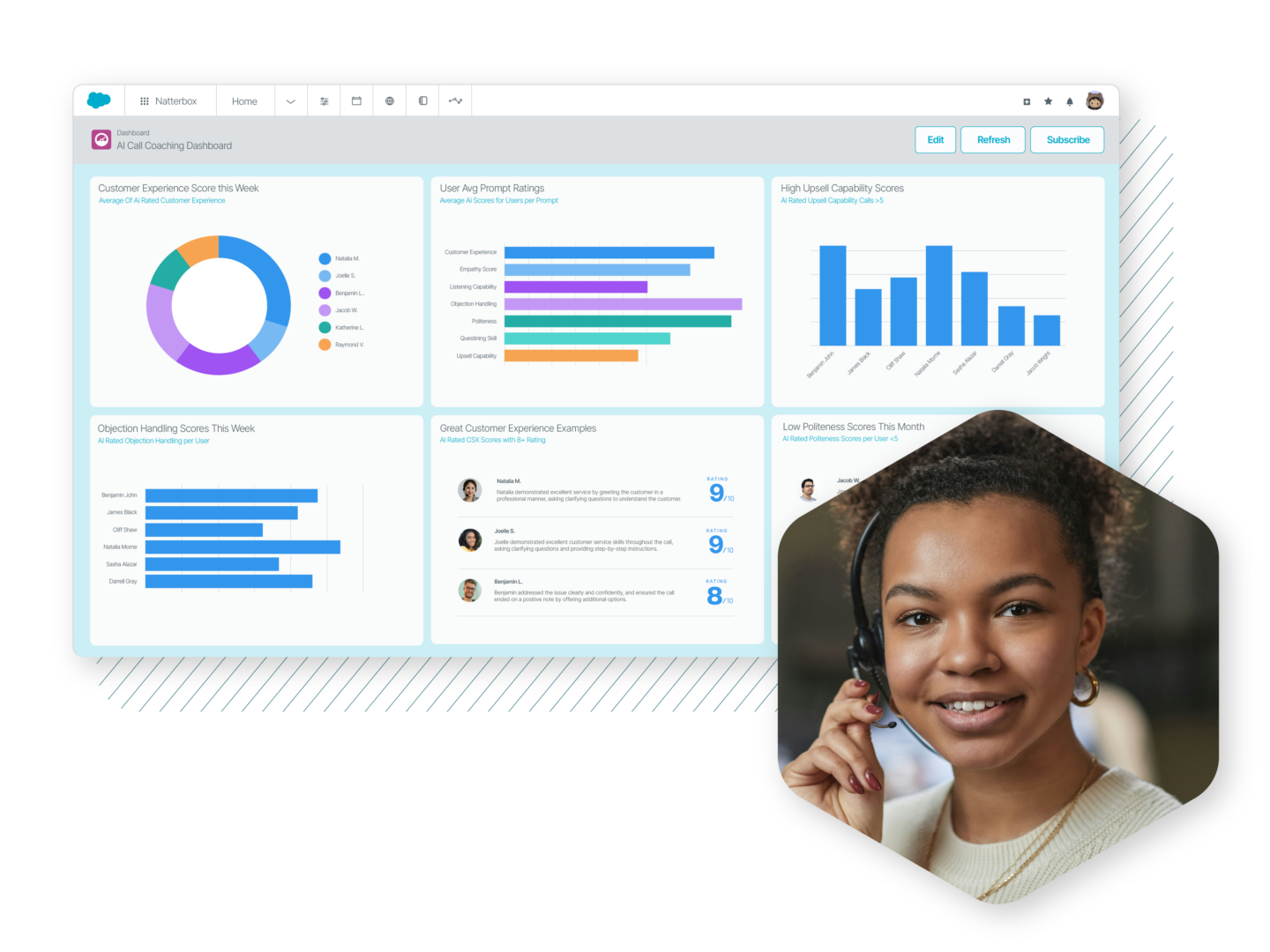Contact Centers
Voice
5 Call Activity KPIs You Should be Tracking in Salesforce
Natterbox Team
Customer retention is vital to any company’s growth. An increase in customer retention of just 5% can boost company revenue by an estimated 25 to 29%. What’s more, it’s estimated that it is 5 to 25 times more expensive to recruit a new customer than to retain an existing one.
So how can companies hold on to valuable customers?
The short answer: by making them feel valued. There’s no better way to make customers feel valued than by providing a great customer service experience. In fact, 76% of Americans view customer service interactions as the “true test” of how much a company values them. If not via a chatbot, the majority of those interactions take place via phone. Two-thirds of customers still pick up the phone to resolve customer service issues, and a bad experience is certain to leave a sour taste in their mouth.
As such, one of the most effective ways to improve satisfaction and cement brand loyalty is to make those customer service calls a painless — or ideally, even pleasant — experience. The most effective way to do so is to capture and capitalize on insightful data. Recording reliable and robust data sets on customer service calls can help organizations adjust processes, protocols, and technology to more consistently delight customers, translating into a direct impact on customer loyalty, and in turn, the business’ bottom line.
That said, while customer service teams may be ultimately responsible for leveraging data to create a better customer experience, the onus is often on Salesforce Admins to set up the infrastructure necessary to do so. This requires choosing the right call KPIs — and optimizing Salesforce dashboards for easier reporting and greater visibility.
Here are some of the top KPIs to track in order to improve customer service:
- Average Handling Time
- First Call Resolution (FCR)
- Average Speed of Answer
- Percentage of Calls Blocked
- Call Abandonment Rate
1. Average Handling Time
Average handle time is generally defined as the average length of time between a call’s initiation and the end of the agent’s after-call work. Some organizations consider handling time to begin as soon as the customer calls, including hold time in the queue, while others start the clock when the customer and agent are connected. It’s important that the definition be kept consistent within an organization in order to collect usable average handle time KPI data.

Why It Matters
AHT may be the holy grail of contact center KPIs. A speedy AHT can indicate that resources like agents’ time are being used effectively, and that customers’ problems are being resolved quickly.
On the other hand, service speed isn’t a perfect indicator of service quality, and relying too heavily on AHT to measure performance can push agents to rush — and offer poor service as a result. AHT needs to be considered in tandem with other KPIs to ensure speed isn’t coming at the cost of customer satisfaction.
How To Improve It
Fortunately, there are ways to improve AHT without sacrificing service quality. The first is agent training; customer service agents must have a strong understanding of the company’s products, services, and policies in order to quickly and confidently offer solutions. The second is technology: intuitive call-logging platforms, up-to-date devices, and reliable internet connectivity can streamline the resolution process and ensure agents aren’t hindered by confusing or laggard technology.
2. First Call Resolution (FCR)
First call resolution measures the rate of customer concerns that are resolved in the first call. It is calculated by dividing the number of issues resolved in a single call by the total number of customer issues.
Why It Matters
A high FCR is indicative of two important measures of contact center success. First, it indicates that resources are being used efficiently — agents aren’t spending double or triple the time to resolve issues that could be addressed in a single call.
Second, the metric is closely linked to customer satisfaction, as it demonstrates that customers are having their questions answered satisfactorily during the first call. It’s estimated that for every 1% improvement in FCR, customer satisfaction increases by 1%. Meanwhile, every time a customer has to contact an organization another time about the same issue, their satisfaction drops by an alarming 15%.
How To Improve It
The most foolproof way to optimize FCR is to offer agents an intuitive, centralized, and unified platform that makes it easy to understand and resolve customer situations in a single call — without having to transfer customers to other agents or departments.
3. Average Speed of Answer
Average speed of answer is the average time it takes for a call to be answered. This time frame should include both the number of rings and the amount of time the customer spends waiting in a queue.

Why It Matters
Average speed of answer, like FCR, is directly linked to customer satisfaction. The less time it takes for customers to reach an agent, the better their overall experience. Average speed of answer is also closely related to another important KPI, call abandonment rate — customers have limited patience for waiting in a queue.
How To Improve It
Optimizing speed of answer ultimately comes down to ensuring that the necessary number of agents are working at busy times. This requires improved call forecasting, which can enable contact centers to properly predict busy times and staff accordingly. Similarly, data-driven call forecasting enables reduced staffing during hours that are less busy, saving costs and ensuring resources are utilized properly.
4. Percentage of Calls Blocked
This metric refers to the percentage of customers who never make it through to speak to an agent. This usually occurs when there are no available agents or when the contact center software can’t handle a surge in volume.
Why It Matters
Like an unacceptably long average speed of answer, a high percentage of calls blocked means that a company is missing out on valuable opportunities to assist and interact with customers, and hurting customer satisfaction in the process.
There is evidence indicating that customer satisfaction rates correlate positively with customer loyalty and brand image — meaning that businesses that invest in improving customer satisfaction are investing in their own success.
How To Improve It
Reducing the percentage of calls blocked requires optimizing both technology and staffing. Not all contact center software is equipped to handle exceptionally high call volumes, but most organizations can’t afford to have software that lets them down when it’s needed most. It’s up to contact centers to know when it’s time to retire legacy systems and invest in new solutions like cloud-based voice systems.
If, however, technology isn’t the problem, strategically staffing more agents when call volume is at its highest can help to reduce the percentage of calls blocked.
5. Call Abandonment Rate
Call abandonment rate refers to the number of customers who hang up before reaching an agent, whether during the ring or while waiting in a queue.

Why It Matters
There may be no better indicator of customer dissatisfaction than a high call abandonment rate. When customers don’t speak to agents, they don’t get their problems resolved — and when they don’t get their problems resolved, they remain unsatisfied with the customer service they’ve received. It’s vital that contact centers remain aware of their call abandonment rate and work to improve it should it be, or become, too high.
How To Improve It
Much like the percentage of calls blocked, reducing abandonment rate requires ensuring that customers can be quickly connected with agents. Of course, that means making sure that agents are actually available when customers are calling. This requires strategic staffing and user-friendly, intuitive technology that empowers customer service agents to do their jobs quickly and easily.
It’s also wise to ensure agents are well-trained and able to resolve customer concerns quickly, particularly if calls are being abandoned while the center is fully staffed. It’s possible that agents aren’t available because their time isn’t being used effectively; an intuitive voice system can help, particularly when combined with thorough training.
Elevating Customer Satisfaction
Salesforce Admins who ensure contact center managers are tracking these five KPIs aren’t just gathering data for the sake of gathering data. These KPIs help unearth actionable insights that can empower organizations to improve customer service — which leads to higher rates of loyalty and improved brand image. In turn, these wins advance critical business results related to customer retention, sales, and more.
While the benefits of collecting — and acting on — this data is apparent, doing so is traditionally time-consuming and laborious. Keeping manual call logs or inputting these numbers into Salesforce one-by-one reduces productivity and morale. Instead, organizations would do well to invest in a CRM-integrated voice system. Integrated solutions streamline data collection and processing, keeping customer service professionals readily equipped with the insights they need to optimize crucial KPIs and improve the customer experience. It’s up to Salesforce Admins to equip contact centers with the right integrated voice solutions — and propel greater business success.



